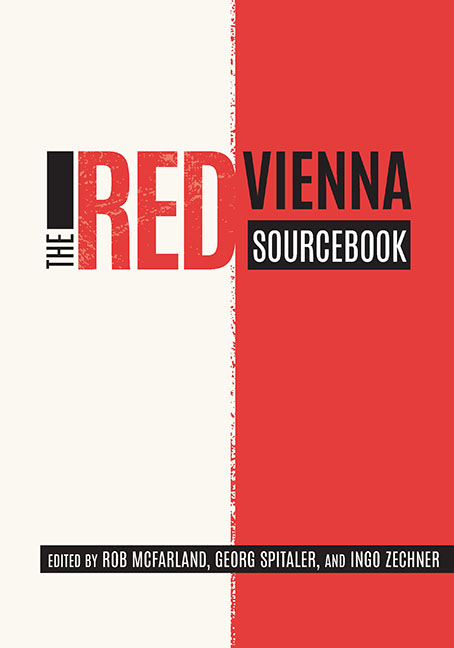Book contents
- Frontmatter
- Contents
- Acknowledgments
- Permissions and Credits
- A Note on the Structure of This Book
- Introduction
- Part I Foundations
- Part II Philosophies
- Part III Identities
- Part IV New Values
- Part V Social Engineering
- Part VI Vitality
- Part VII Housing
- Part VIII Cultural Politics
- Part IX Mass Media
- Part X Exchange
- Part XI Reaction
- Part XII Power
- Chronology
- References
- Contributors
- Index of Subjects
- Index of Persons
Chapter 28 - Newspapers and Radio
Published online by Cambridge University Press: 23 October 2020
- Frontmatter
- Contents
- Acknowledgments
- Permissions and Credits
- A Note on the Structure of This Book
- Introduction
- Part I Foundations
- Part II Philosophies
- Part III Identities
- Part IV New Values
- Part V Social Engineering
- Part VI Vitality
- Part VII Housing
- Part VIII Cultural Politics
- Part IX Mass Media
- Part X Exchange
- Part XI Reaction
- Part XII Power
- Chronology
- References
- Contributors
- Index of Subjects
- Index of Persons
Summary
THE EXPERIMENTAL QUALITIES of print and broadcast media in Red Vienna embodied many of the contradictions and paradoxes of the entire Viennese social democratic experiment. As media “for all,” they were not only intended to be accessible and available in the sense of Jürgen Habermas's “public sphere”; they were also characterized by forms of universal address in the sense of Benedict Anderson's “imagined communities.” Therefore, the media needed to project both individual and mass appeal. In Red Vienna, determining the composition of the mass audience and developing means to reach them on the whole and in the singular were the main concerns for the party's leading cultural thinkers and nonpartisan figures alike, from Oscar Pollak and David Josef Bach to Alfred Polgar, Joseph Roth, and Karl Kraus.
Throughout the decade, the expectations of inclusiveness and inclusivity were increasingly haunted by the specters of partisanship and exclusivity. To promote their goals of social pedagogy in the service of class struggle, the Social Democrats engaged with thendominant media such as the party's daily newspaper (Arbeiter-Zeitung) and the national radio station (Radio Verkehrs AG, RAVAG). The Social Democratic Workers’ Party also created an infrastructure of cultural organizations, ranging from libraries for workers through societies for film and radio enthusiasts to clubs for particular interest groups. In this period of heady technological innovation, the rejuvenation of print in the form of advertising columns, wall and street newspapers, and illustrated magazines were complemented by early experiments with television and image-based telegraphy. With a focus on the dominant media of radio and newspapers, this chapter documents the parallel development of partyrun industries for communicating and distributing information to the masses. The juxtaposition of the old medium with its new competitor reveals a surprising similarity: while Social Democratic print culture battled to assert itself against the entrenched forces of Vienna’s bourgeois and boulevard press culture, radio provided an opportunity to renegotiate longstanding concerns about neutrality, representation, and freedom of speech.
The print sources included in this chapter, though not necessarily expressions of the new media themselves, illuminate Red Vienna's struggle to harness the power of mass media in the service of its collective, egalitarian political project. Far more than a straightforward form of propaganda, mass media in Red Vienna reveal tensions between the bourgeoisie and the working class, the technological and the traditional, which resulted in a number of unresolved contradictions.
- Type
- Chapter
- Information
- The Red Vienna Sourcebook , pp. 547 - 566Publisher: Boydell & BrewerPrint publication year: 2019



